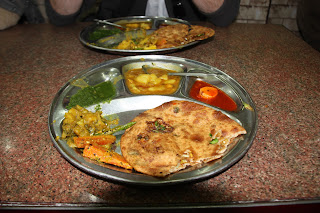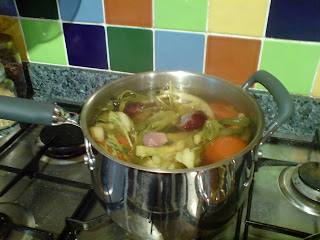I originally posted this recipe on facebook, long before I ever thought of doing a blog. At that time, I'd just come back from my Summer holidays to Italy and France and was looking for ways of making low fat delicious food since I had to lose the points I'd piled on whilst on holiday.
Since I am now recently returned from the land whose cuisine inspired this dish, Thailand, land of smiles, I thought it might be a good time to post this to my blog. I had steamed fish whilst on my travels in Thailand; they steam the fish whole with lots of chili and lime. The results are incendiary but immensely satisfying!
I'll confess that I've always been a little scared of cooking fish. That's because, much like the rhyme about the 'little girl with a little curl right in the middle of her forehead' when the dishes come out good, they are very, very good and when they are bad, they are horrid. Overcooking is, to my mind, the biggest disaster in fish cookery. It is also the sin I commit the most often. So I invented this dish to avoid that problem. Steaming does not involve the direct application of heat to the fish, which is why it gives you the most leeway with cooking time. Pan-frying gives none; it is either cooked perfectly or overdone. I am not alone in the use of steaming as a method of cooking for fish. Although out of favour in the UK, it is common in China and across the south east of Asia. The benefits are, as I say, it avoids overcooking, but it also maintains the integrity of the fish, and does not involve copious amounts of fat.
Here are the ingredients:
2 fillets of haddock (around 350g total) - You could use any fish you like, though
1 2cm piece of ginger, peeled and sliced into rounds
2 chillies sliced in half
1tbsp chopped coriander
1 lime - juiced
1 tsp sesame oil
1 tsp soy sauce
half a clove of garlic chopped into tiny pieces
Mix up all the ingredients except for the haddock into a large bowl. Once mixed, put the haddock on top, skin side up. Move around so that the filletted side comes into contact with the other ingredients. Marinade at room temp for 5-10 mins (the time it takes for the water in your steamer to come to the boil).
I have both a metal steamer pot and a bamboo steamer, but only the metal pot was big enough to fit the fish into. If you have a bamboo steamer with a bottom big enough to fit a china plate on, that would be the perfect utensil for the job. I had to improvise - so I used a piece of doubled up foil bigger than the bottom of the steamer with the edges rolled up to hold in all the juices.
Once the water in the pan is boiling, empty all the marinade ingredients onto the foil or plate. Place the fish skin side up on the plate or foil. Put the lid on.
Steam for 8-10 mins. Scrape off marinade ingredients before serving.
Serve with rice or salad, although I served it with a rice salad!
First posted by Snigdha Nag on facebook on Tuesday, 17 August 2010 at 10:57


















.JPG)
.JPG)